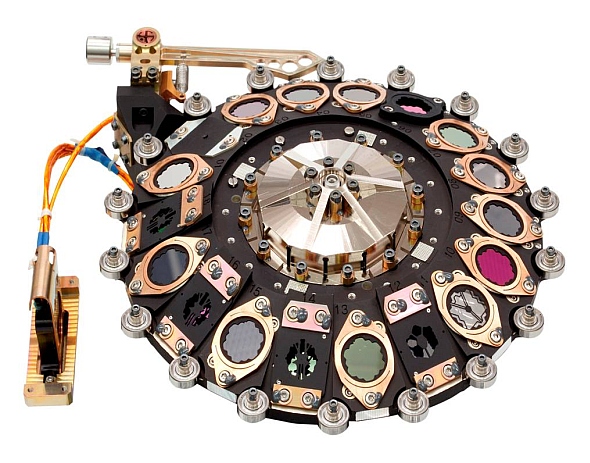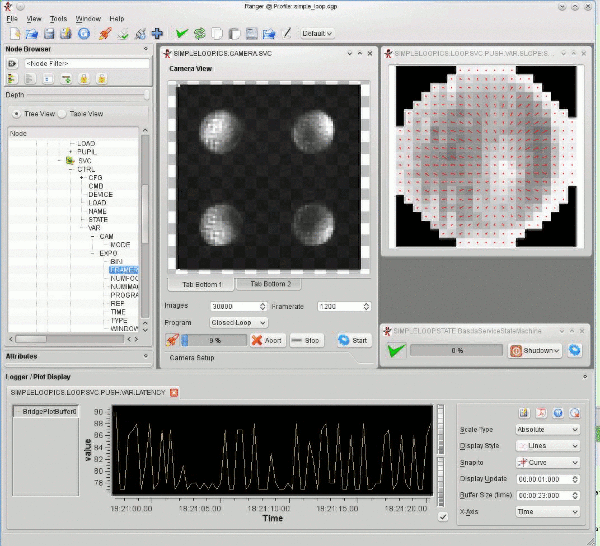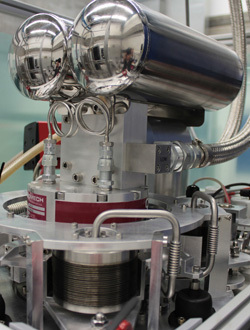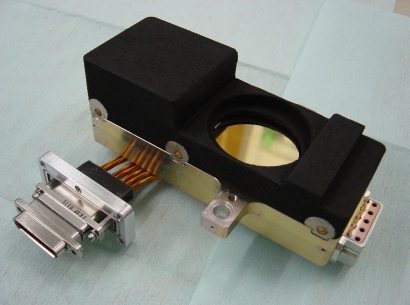| Version 401 (modified by , 5 years ago) (diff) |
|---|
The AstroTechTalk (ger) offers a place to discuss, for all interested colleagues and especially for the technical departments, the project leaders, the administration and the scientists as the ultimately users:
- status of instrumentation projects
- scientific tasks and features of the instruments in construction or planned
- new possible involvements
- technical innovations and developments
- technical problems and their solutions
- logistical problems and their solutions
- how to improve operation and observation
- project standards.
Time: Always Fridays 11:00 - 12:00 (during the construction work: 10:00 - 11:00)
Location: MPIA Hoersaal (during the construction work: HdA Auditorium)
Outline:
- Announcements (news, visitors, etc.) (mainly in German)
- Talk of about 30 min about a selected topic (German or English, will be announced)
- Follow up discussion and questions (German or English, depending on the speaker)
Proposals for talks: Please send an email to "hofferbert -at- mpia.de" or "naranjo -at- mpia.de" - alternatively you might reach us by phone (06221-528209 or -290) or in person (room 211 or 018) at MPIA.
| Date | Speaker | Topic |
| 04.01.2019 | -- | Christmas Break |
| 11.01.2019 (11hrs, MPIA Hoersaal) | Carlos Correia (LAM) | Making it up to E(A)LT's: Extremely (Adaptive) Large Telescopes Observations with giant segmented ground telescopes promise to revolutionise VIS and NIR astronomy. Yet, to take full benefit of the collecting power, resolution (and sensitivity) of these huge machines, adaptive optics systems are key and are poised to become mainstream. They are to assist 100% of the observations, for ELTs are too large to operate as conventional seeing-limited telescopes. Carlos Correia will provide an overview of current developments on novel wave-front sensing techniques using natural and laser guide stars, advanced wave-front reconstruction for the different AO modes and the challenges faced when customising AO post-processing in order to meet stringent science goals. Furthermore, he will show how these developments are propelling the design of HARMONI, the European Extremely Large Telescope's 1st light IFU. Presentation: English Slides: English Questions: German, English |
| 18.01.2019 | ||
| 25.01.2019 (11hrs, HdA Auditorium) | Martin Kürster | Double Feature: (1) Introduction of project NTE MPIA has joined a project for a new instrument for the Nordic Optical Telescope (NOT) on La Palma, called NOT Transient Explorer (NTE). It will provide medium resolution optical/NIR spectroscopy and imaging in a rapid response mode to catch transient astronomical phenomena as fast as possible. The consortium building the instrument is led by the Niels Bohr Institute in Copenhagen who have asked MPIA to provide NTE with our in-house read-out electronics (ROE) for its NIR cameras, i.e. two systems for the imaging and spectroscopic channels plus one spare unit. For us, this is a unique opportunity to bring our ROE to a new facility and continue contributing our special expertise in this field. (2) CARMENES finds Super-Earth at Barnard's Star - after all Up until the 1990s astronomical textbooks claimed that two Jupiter-like planets were orbiting Barnard's star, the closest single star to the Sun. This claim was based on astrometric measurements, which determine the reflex motion of a star caused by the gravitational pull of its planets. More precise observations demonstrated later that these planets do not exist and that the apparent motion of the star had been caused by uncorrected instrumental effects. Actually, until today, the astrometric technique has not found a single exoplanet. Recently though, the well-established radial velocity method has led to a new exoplanet claim around Barnard's star, a cold Super-Earth, the first of its type near the snow line of its system. This difficult discovery was made possible by combining data from seven instruments among which CARMENES was a key player. It will require independent confirmation, expected to come after 2021 from the most precise astrometric measurements ever to be provided by the final release of data from the GAIA satellite. Presentation: German Slides: English Questions: German, English |
| 01.02.2019 | ||
| 08.02.2019 | ||
| 15.02.2019 (11Uhr, MPIA Hoersaal) | Vianak Naranjo | Status Update: construction work at MPIA's basement How do the offices look like? How far are the new showers? Are the new lamps already installed? We ask ourselves these and many other questions, because without having a look, we really don't know how is it going down there. Vianak Naranjo will show us with pictures what is the current situation with the construction activities in the basement. Presentation: German Slides: English Questions: German, English |
| 22.02.2019 (11Uhr, MPIA Hoersaal) | Sebastiaan Haffert (Leiden University) | The Leiden EXoplanet Instrument (LEXI): observing exoplanets with high-resolution integral-field spectroscopy After several successful decades of exoplanet detection, we are now at the starting point of exoplanet characterization. Direct Imaging allows for unambiguous characterization of exoplanets and their atmospheres. With the ELT coming up in the next decade we will be able to directly image several tens of planets. One of the challenges to overcome is the slowly drifting non-common path error which is limiting the detection of exoplanets at a few lambda/D. High-resolution spectroscopy can be used to overcome these speckles and probe closer and deeper to the star and at the same time characterize the exoplanet. To that end we have developed the Leiden EXoplanet Intrument (LEXI), a pathfinder for the ELT/EPICS, aimed at overcoming the huge planet/star contrasts at a few lambda/D and characterizing exoplanets with high-resolution spectroscopy. During this talk Sebastiaan Haffert will show and discuss the results obtained with LEXI. Presentation: English Slides: English Questions: German, English |
| 01.03.2019 | ||
| 08.03.2019 | ||
| 15.03.2019 | ||
| 22.03.2019 (10hrs, HdA Auditorium) | Noah Schwartz (ATC Edinburgh) | Adaptive Optics for HARMONI: a diffraction-limited ELT HARMONI is a visible and near-infrared integral field spectrograph, providing the ELT’s core spectroscopic capability, starting at First Light. To get the full sensitivity and spatial resolution gain, HARMONI will work at diffraction limited scales. This will be possible due to two adaptive optics (AO) systems, complementary to each other. The first one is a simple but efficient Single Conjugate AO system (good performance, low sky coverage), fully integrated in HARMONI itself. The second one is a Laser Tomographic AO system, providing a very high sky-coverage to the instrument. Both AO modes for HARMONI have gone through the Preliminary Design Review at the end of 2017, and will enter in Final Design phase from early 2018 to early 2020. In this talk, Noah Schwartz will provide an overview of HARMONI and on the on-going developments in the AO systems. He will focus on the single conjugate mode (SCAO) and in particular the SCAO wavefront sensing using a Pyramid. He will also detail a set of key items that have been addressed during the PDR, especially the “Island Effect” produced by the ELT's segmented pupil, and how the instrument team plans to tackle it. Presentation: English Slides: English Questions: German, English |
| 29.03.2019 | ||
| 05.04.2019 (11Uhr, MPIA Hoersaal) | Robert Harris (ZAH, LSW) | A multi-core integral field unit (MCIFU) instrument: Spectroscopy of disks and planets using single mode fibres They say the best things in life are free and whilst that is not technically true, it’s amazing what you can do with a shoestring budget and enough favours (including a mystery contribution from the MPIA). Today, Robert Harris will present LSW's multi-core integral field unit (IFU) instrument, a single mode IFU, designed to filter starlight and characterise directly imaged exoplanets with a R ~ 5000. It is based upon the SCAR concept, using the spatial filtering properties of single mode fibres to increase the star-planet contrast. Once built, the full instrument will be fed by an AO corrected beam, with the light being captured by a custom array of 3D printed microlenses sitting on a 73 core multi-core fibre, which will feed a reformatter. This in turn will form the pseudo-slit of a diffraction limited spectrograph, with a footprint of around -30 x 50 cm, not bad for an instrument that is designed to sit behind an 8 m class telescope. It will have its preliminary integration and testing in July 2019 at the 4.2 m William Herschell telescope in La Palma. Here we hope to fully characterise the instrument and hopefully get some nice scientific results before taking the instrument onto bigger and better things! Presentation: English Slides: English Questions: German, English |
| 12.04.2019 | ||
| 19.04.2019 | -- | Good Friday |
| 26.04.2019 | -- | Easter Break |
Preview:
DD.MM.2019 - Speaker: Title
Postview:
Presentations from 12.09. - 31.12.2014
Presentations from 01.01. - 31.07.2015
Presentations from 01.08. - 31.12.2015
Presentations from 01.01. - 31.07.2016
Presentations from 01.08. - 31.12.2016
Presentations from 01.01. - 31.07.2017
Presentations from 01.08. - 31.12.2017
Presentations from 01.01. - 31.07.2018
Attachments (11)
- instrum8_gr.jpg (82.6 KB) - added by 10 years ago.
- instrum4_gr.jpg (104.4 KB) - added by 10 years ago.
- pedv3_gr.jpg (213.9 KB) - added by 10 years ago.
- alfa3.5.gif (235.6 KB) - added by 10 years ago.
- CIAO.jpg (3.8 MB) - added by 8 years ago.
- linc_nirvana_labor.jpg (255.2 KB) - added by 8 years ago.
- MATISSE.jpg (43.1 KB) - added by 8 years ago.
- miri_fm_filterwheel.jpg (145.6 KB) - added by 8 years ago.
- PACS-Chopper.jpg (80.0 KB) - added by 8 years ago.
- simple_loop.gif (965.4 KB) - added by 8 years ago.
- teaser.jpg (13.5 KB) - added by 8 years ago.
Download all attachments as: .zip







